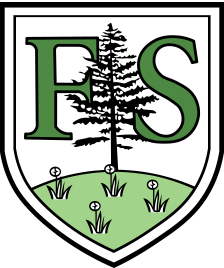RE (Religious Education)
Our Curriculum Intent for Religious Education
At Fleet Infants School we follow the Living Difference IV syllabus, the agreed syllabus for Hampshire Schools.
Living Difference IV seeks to introduce children and young people to what a religious way of looking at and existing in the world may offer in leading one’s life, individually and collectively. It recognises and acknowledges that the question as to what it means to lead one’s life with such an orientation can be answered in a number of qualitatively different ways.
Living Difference IV December 2021.
At Fleet Infant School, through our Religious Education Curriculum, we aim to help children:
- Develop a deep sense of identity and belonging by reflecting on their own experiences and learning about those of others.
- Gain an age-appropriate understanding of key religious concepts, focusing on how these are lived and expressed within Christianity and Hinduism.
- Foster respect, tolerance and curiosity about different ways of life.
- Engage with key festivals, symbols and stories, primarily from the religions of Christianity and Hinduism, while also drawing on other faith traditions where appropriate.
Our curriculum is carefully sequenced to support progression from Reception to Year 2. The Golden threads of Living Difference IV – community, belonging, special, love and celebration – are woven throughout our curriculum, helping the children to make meaningful connections between their own lives and the lived experiences of others.
Implementation
At Fleet Infant School, Religious Education (RE) is a vital part of a broad and balanced curriculum. Following the Living Difference IV syllabus, our RE provision supports pupils’ spiritual, moral, social and cultural development by encouraging them to explore lived experiences, ideas and values from their own lives and those of others.
We primarily focus on Christianity and Hinduism, which enables children to encounter beliefs and practices from two major world religions.
RE is delivered through inquiry-based lessons that follow the five key steps of the Living Difference cycle: communicate, apply, enquire, contextualise and evaluate. These steps support pupils in exploring key concepts and making meaningful connections to their own experiences and the wider world.
Teaching is age-appropriate and concepts are taught in a variety of ways such as looking at artefacts, story-telling, drama and discussion.
Christianity is taught through familiar bibles stories, celebrations, and exploring religious practices such as baptism and the Advent ring. We also have a fortnightly visit from the local church’s ‘Open the Book’ team who present bible stories in an engaging, interactive way. Hinduism is introduced through stories such as Rama and Sita, festivals like Diwali and Holi, and symbolic practices such as Puja and Dana, helping children to gain an appreciation of diversity and respects for others’ beliefs and cultures.
Impact
By the end of Key Stage 1, pupils will have:
- A growing understanding of key religious concepts (e.g love, celebration, belonging, community) and how these are expressed in the lives of Christians and Hindus.
- An ability to reflect on their own experiences and responses and compare them to those of others in a respectful, thoughtful way.
- Developed empathy and respect for people of different cultures and faiths.
‘I like learning about Jesus. He was a person who made the world better’.
‘Christians say thank you to God because they believe that he made the food and the world’.
‘Rama and Sita shows us light wins over dark’.
Inclusion
The RE curriculum is planned to be precise and appropriately adapted and meet the needs of all learners. Every child is entitled to an RE curriculum, that is adapted to meet their individual needs and allows them to be successful. Teachers consider the barriers of the individual children and the key learning of each lesson; identifying the specific new learning. Teachers consider how to:
- present new vocabulary with accompanying images to help embed specialist vocabulary
- Break down ideas into bite size pieces which a learner can master before moving onto the next idea.
- Make links between topics and lives of learners
- Use photographs, video clips and artefacts to help learners visualise and understand practices which may be outside of their day to day experience
- Focus learner’s attention on the new content ensuring that all children are able to communicate their ideas and beliefs through the arts and technology.
RE in Year 1
RE in Year 2
Fleet Infant School follows the Hampshire syllabus 'Living Difference'. Detailed below is our long term overview for KS1.
RE Topic and Skills Overview

























